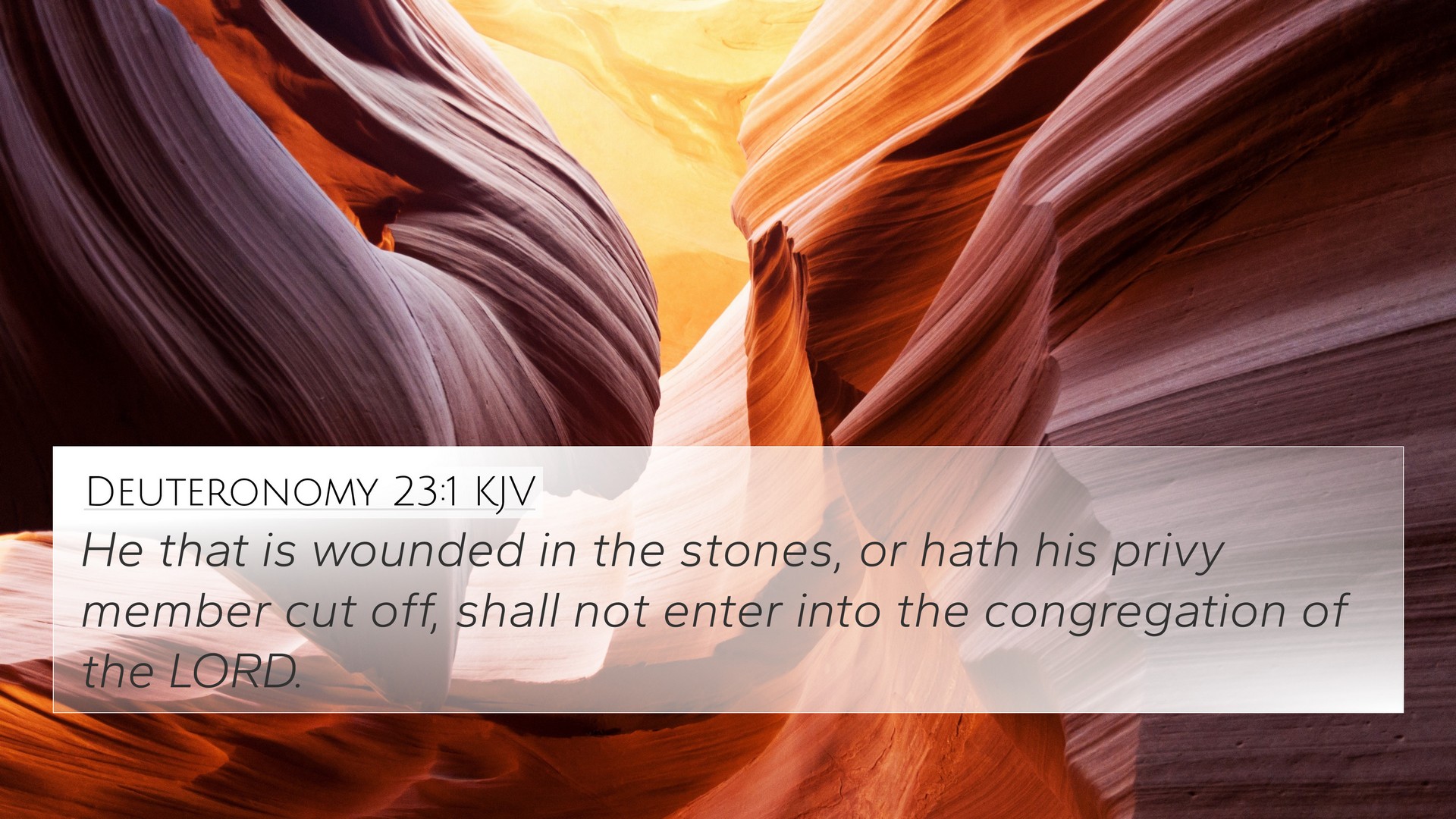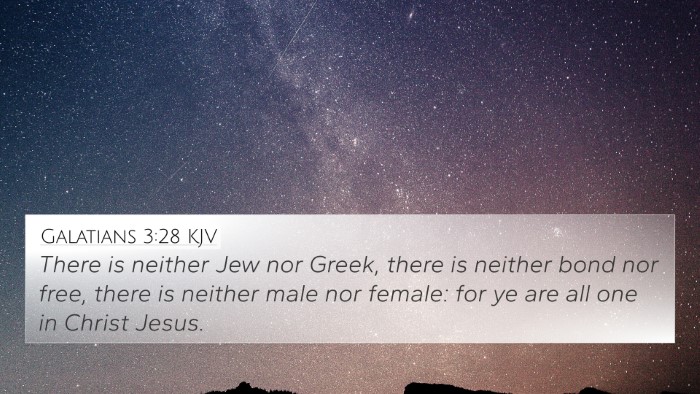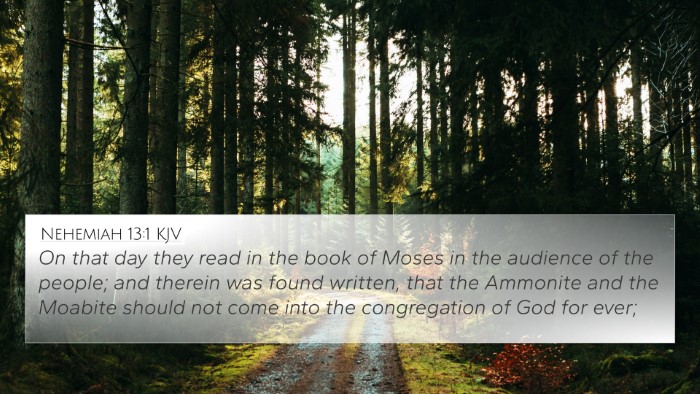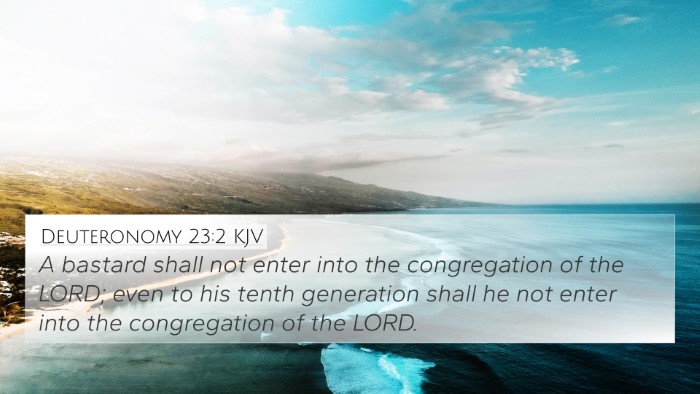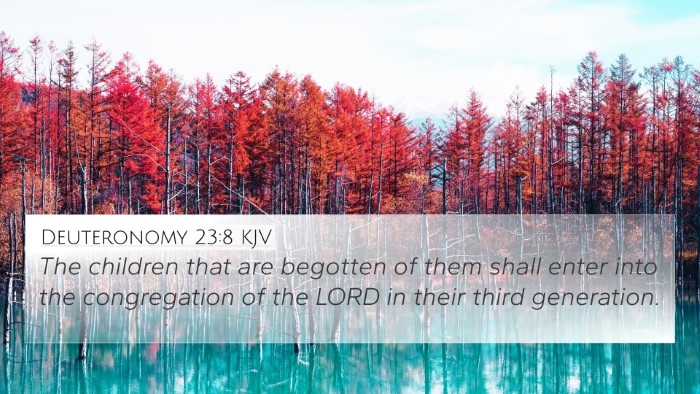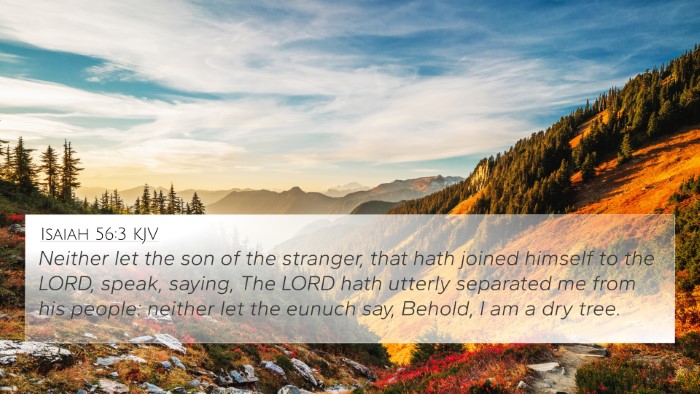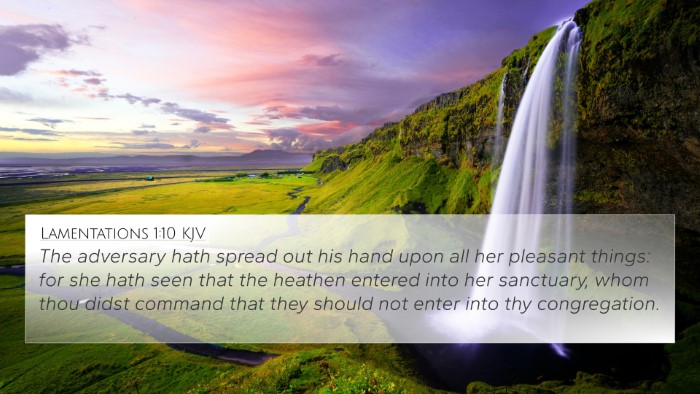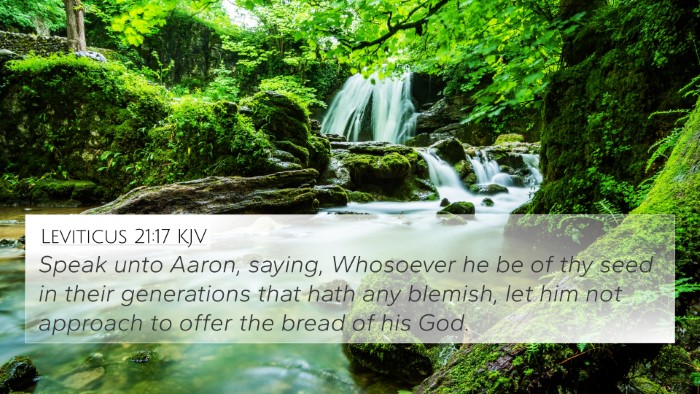Understanding Deuteronomy 23:1
Deuteronomy 23:1 states: “He that is wounded in the stones, or hath his privy member cut off, shall not enter into the congregation of the Lord.” This verse speaks to the regulations regarding who may participate in the assembly of God's people and serves to illustrate the holiness required of those who wish to stand before God.
Summary of the Verse Meaning
This scripture emphasizes the physical and spiritual integrity necessary for one to be accepted among the congregation. The context of this restriction reflects God’s standards for moral purity and the seriousness of the covenant relationship between God and Israel. Here, the term “being wounded in the stones” indicates a man suffering injury to his reproductive organs, while “privy member cut off” refers to castration.
Insights from Public Domain Commentaries
-
Matthew Henry:
Henry comments on the significance of maintaining holiness and integrity within the congregation. He notes that this command highlights God's desire for purity within His people, symbolizing the importance of not just physical health but also spiritual wholeness. Henry posits that such restrictions reveal God's judgment against acts considered defiling, pointing to a broader principle of maintaining sacredness in worship.
-
Albert Barnes:
Barnes expands upon the implications of this verse, stating that it reflects a profound connection of bodily integrity with one's standing in the community of faith. He underscores the idea that being part of the congregation is a privilege that entails adherence to specific standards, reinforcing the concept that one's physical state is tied to their ability to serve and worship rightly in the assembly of believers.
-
Adam Clarke:
Clarke provides a more detailed examination of the cultural context of this regulation, suggesting that it mirrors similar laws from surrounding cultures which prioritized the physical completeness of individuals within their religious constructs. He argues that while such laws may seem harsh, they were established as part of the larger framework to delineate Israel from other nations and to uphold the sanctity of the worship experience.
Key Themes and Cross-References
This verse can be understood deeply within the themes of holiness, purity, and accessibility to divine presence. Below are some pertinent cross-references that further illustrate these themes:
- Leviticus 21:17-21: Similar prohibitions against physical defects for priests.
- Isaiah 56:3-5: God's acceptance of eunuchs who keep the Sabbath, showing a different perspective on inclusion.
- Galatians 5:2-6: Emphasizes faith over physical conditions, drawing a connection to New Testament inclusivity.
- 1 Corinthians 12:12-27: The body of Christ metaphor, discussing how all parts are vital regardless of their condition.
- Hebrews 12:14: Calls for holiness, as seen in the connections with community worship.
- Acts 8:26-40: The Ethiopian eunuch's acceptance into the faith, highlighting that physical barriers do not limit one’s relationship with God.
- Matthew 5:8: Blessed are the pure in heart, suggesting that purity is a heart condition, thus broadening the understanding of integrity.
Comparative Study of Thematic Connections
In studying Deuteronomy 23:1 alongside its cross-references, readers can identify a pattern of how physical limitations are viewed within the biblical narrative. The feeling of exclusion in Deuteronomy contrasts with later texts that facilitate inclusion based on faith rather than physical attributes. Through comparative analysis, one can derive deeper insights into how God’s character and the nature of His covenant evolve.
Tools for Bible Cross-Referencing
Using tools for effective Bible cross-referencing can enhance the study experience. Consider utilizing:
- Bible concordance to find parallel verses.
- Bible cross-reference guide to locate related scriptures easily.
- Cross-reference Bible study techniques that focus on thematic analysis.
Conclusion
Deuteronomy 23:1 is not merely a regulation; it symbolizes larger themes of holiness, integrity, and the evolving understanding of God’s inclusivity. By examining this verse with the assistance of public domain commentaries, thematic connections, and practical cross-referencing tools, readers can achieve a comprehensive understanding of its implications both in the Old Testament context and its resonance in New Testament teachings.
